Chapter: 11th Chemistry : UNIT 1 : Basic Concepts of Chemistry and Chemical Calculations
Solved Example Problems: Basic Concepts of Chemistry and Chemical Calculations
32) The density of carbon dioxide is equal to 1.965 kgm-3 at 273 K and 1 atm pressure. Calculate the molar mass of CO2.
Given :
The density of CO2 at 273 K and 1 atm pressure = 1.965 kgm-3
Molar mass of CO2 = ?
At 273 K and 1 atm pressure, 1 mole of CO2 occupies a volume of 22.4 L
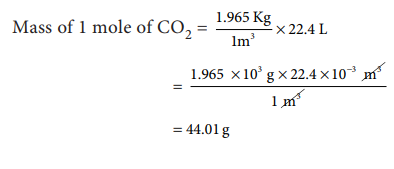
Molar mass of CO2 = 44 gmol–1
33) Which contains the greatest number of moles of oxygen atoms
i) 1 mol of ethanol
ii) 1 mol of formic acid
iii) 1 mol of H2O
Answer:

34) Calculate the average atomic mass of naturally occurring magnesium using the following data
Answer:

35) In a reaction x + y + z2 → xyz2 identify the Limiting reagent if any, in the following reaction mixtures.
(a) 200 atoms of x + 200 atoms of y + 50 molecules of z2
(b) 1mol of x + 1 mol of y+3 mol of z2
(c) 50 atoms of x + 25 atoms of y+50 molecules of z2
(d) 2.5 mol of x +5 mol of y+5 mol of z2
Answer:
Reaction : x + y + z2 → xyz2
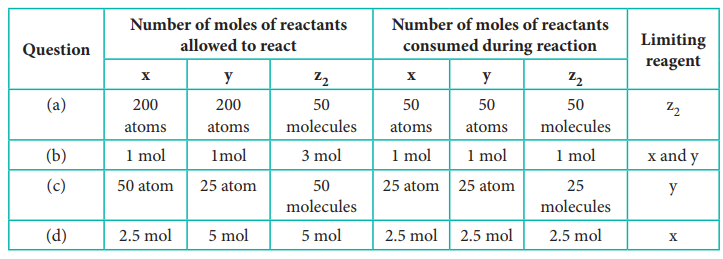
36) Mass of one atom of an element is 6.645 x 10-23 g. How many moles of element are there in 0.320 kg.
Answer:
Given: mass of one atom = 6.645 × 10–23 g
∴ mass of 1 mole of atom = 6.645 × 10–23 g × 6.022 × 1023
= 40g

= 8 mol.
37) What is the difference between molecular mass and molar mass? Calculate the molecular mass and molar mass for carbon monoxide.
38) What is the empirical formula of the following ?
i) Fructose (C6H12O6) found in honey
ii) Caffeine (C8H10N4O2) a substance found in tea and coffee.
Answer:

39) The reaction between aluminium and ferric oxide can generate temperatures up to 3273 K and is used in welding metals. (Atomic mass of AC = 27 u Atomic mass of 0 = 16 u)
2Al + Fe2O3 → Al2O3 +2Fe; If, in this process, 324 g of aluminium is allowed to react with 1.12 kg of ferric oxide.
i) Calculate the mass of Al2O3 formed.
ii) How much of the excess reagent is left at the end of the reaction?
Answer:
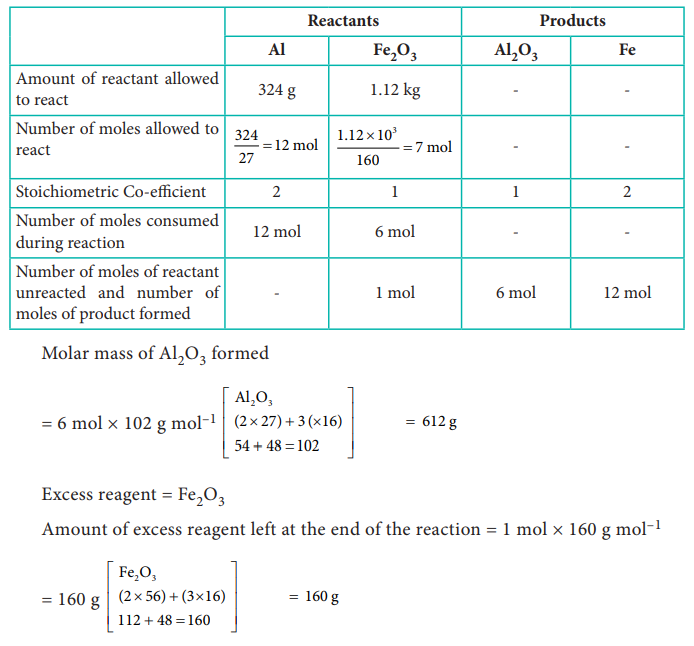
40) How many moles of ethane is required to produce 44 g of CO2 (g) after combustion.
Answer:
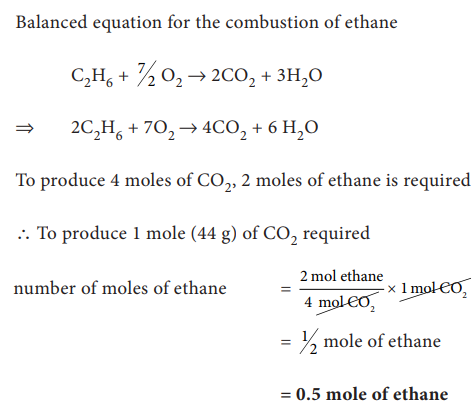
41) Hydrogen peroxide is an oxidising agent. It oxidises ferrous ion to ferric ion and reduced itself to water. Write a balanced equation.
Answer:
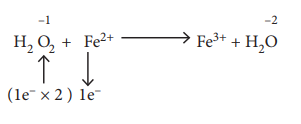
1 H2O2 + 2Fe2+ → Fe3+ + H2O
⇒H2O2 + 2Fe2+ + 2H+ → 2Fe3+ + 2H2O
42) Calculate the empirical and molecular formula of a compound containing 76.6% carbon, 6.38 % hydrogen and rest oxygen its vapour density is 47.
Answer:
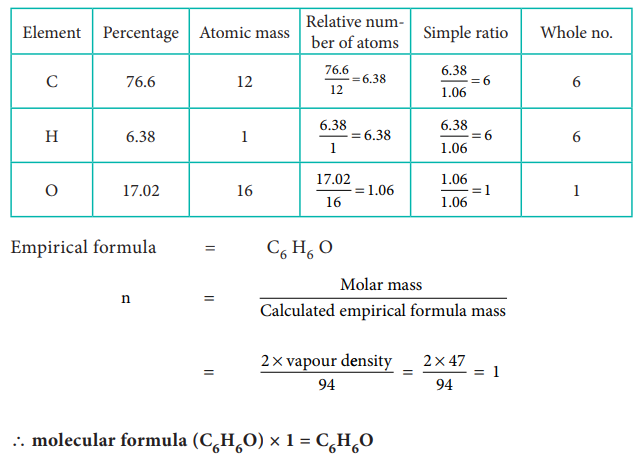
43) A Compound on analysis gave Na = 14.31% S = 9.97% H= 6.22% and O= 69.5% calculate the molecular formula of the compound if all the hydrogen in the compound is present in combination with oxygen as water of crystallization. (molecular mass of the compound is 322).
Answer:
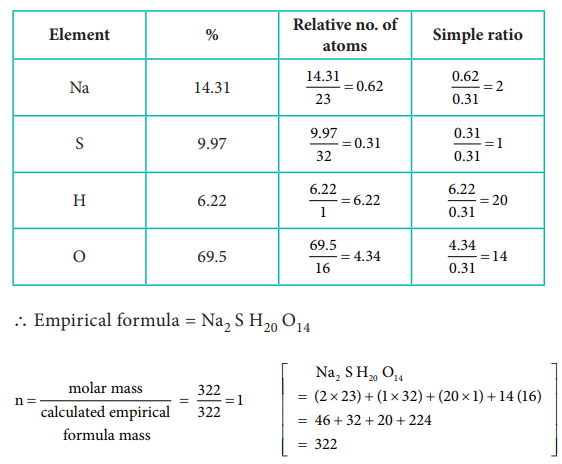
Molecular formula = Na2 S H20 O14
Since all the hydrogen in the compound present as water
∴ Molecular formula is Na2 SO4 . 10H2O
44) Balance the following equations by oxidation number method
i) K2Cr2O7 + KI + H2SO4 → K2SO4 + Cr2(SO4)3 +I2+H2O
ii) KMnO4 + Na2SO3 → MnO2 + Na2SO4 + KOH
iii) Cu+ HNO3 → Cu(NO3)2 + NO2+ H2O
iv) KMnO4+H2C2O4 + H2SO4 → K2SO4 + MnSO4 + CO2 + H2O
Answer:
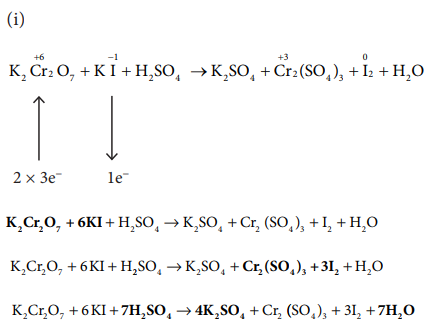
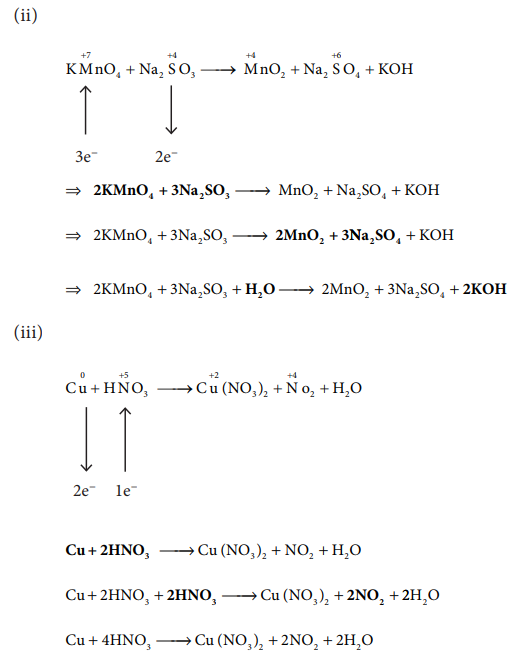
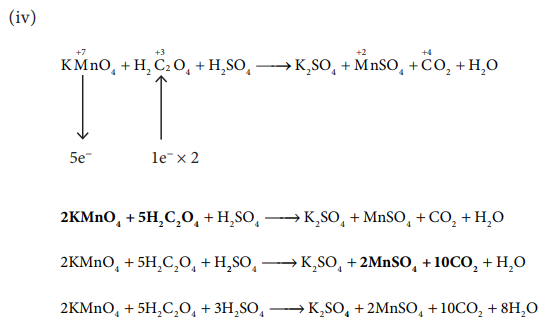
45) Balance the following equations by ion electron method.
i) KMnO4 + SnCl2+HCl → MnCl2 + SnCl4 + H2O + KCl
ii) C2O42_ + Cr2 O72_ → Cr3+ + CO2 (in acid medium)
iii) Na2S2O3 + I2 → Na2S4O6 + NaI ( in acid medium)
iv) Zn +NO3_ → Zn2+ + NO
Answer:
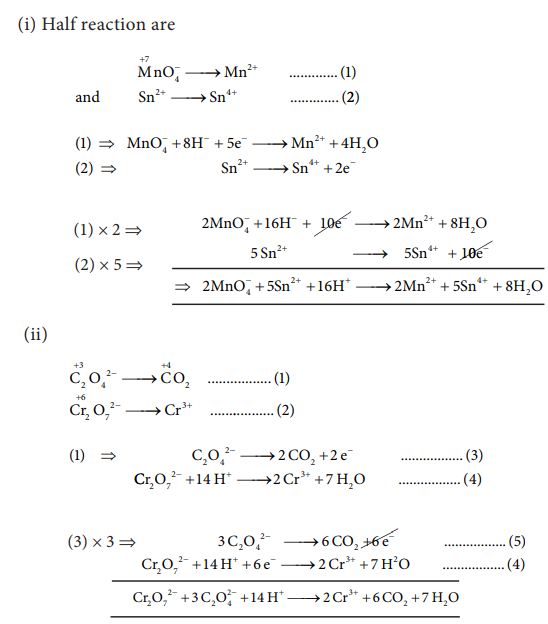
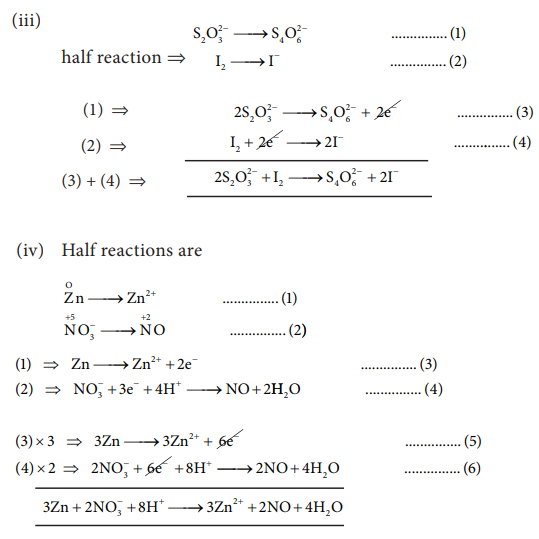
Related Topics